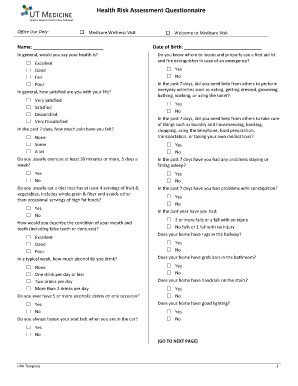

Safety assessments consider the risk posed by potential sources of immediate injury and bodily trauma in a workplace, whereas health risk assessments consider how chemical, biological, and ergonomic hazards may cause harm to bodily functions or physical integrity, with that harm often occurring cumulatively over an extended period of time. Health risk assessments can be considered separately from safety risk assessments. Depending on the jurisdiction and the industry under consideration, health risk assessments may be addressed either as discrete workplace risk assessments or folded into a comprehensive workplace hazard and risk assessment. Risk assessments include both an estimate of the probability that a hazard could cause harm to human health and an evaluation of the potential severity of the damage that could be caused by the hazard. Metrolink began servicing trains at CMF in 1991.Safeopedia Explains Health Risk Assessment (HRA) The CMF, which is located on a parcel of what once was referred to as Southern Pacific’s Taylor Yard, has been a rail facility servicing locomotives and rail cars since the 1920s. Without Metrolink service, an additional 18,000 vehicles would be on the roads each weekday.Ī health risk assessment (HRA) is an analytical tool used to estimate whether current and/or future exposures to certain air pollutant emissions will pose health risks to a broad population, such as a city or a community. Additionally, staff has reduced the amount of time trains are on service and inspection tracks by 50 percent. In order to reduce noise at the facility, train maintenance, servicing and testing is done during business hours to avoid disrupting sleep and weekend recreation activities. Currently 33 of Metrolink’s 52 locomotives are equipped with this technology. In 2010-11 AESS reduced the amount of fuel used from the previous year by 860,000 gallons and saved the agency $2 million. AESS is a mechanism that prevents unnecessary idling, reducing fuel use and emissions. Metrolink has installed Automatic Engine Start Stop (AESS) technology into its locomotives and implemented an aggressive fuel conservation program. Nine ground power stations have been installed, while the facility anticipates an additional four stations being built this year. The locomotive upgrades will have system-wide benefits, and as well as help reduce emissions in the surrounding communities.Īt the facility itself, Metrolink has implemented a plug-in policy that enables trains to utilize ground power while being cleaned and serviced instead of utilizing the engines that power the passenger cars. Metrolink has allocated $129.4 million for the purchase of the locomotives. These locomotives produce more than 80 percent less particulate matter and oxides of nitrogen than current older engines and will be delivered in late 2015.

Metrolink made a major contribution toward improving the quality of the environment and future rail system operations with the purchase of up to 20 new low-emission Tier 4 locomotives. Metrolink has worked extensively with community groups, key stakeholders and elected officials over the past two years to implement a wide array of facility and operational improvements. “I, as much as anyone, want to know the results of this assessment, along with the subsequent measurement of the air quality improvements we have already made to the facility.”

“As the mayor of the city that hosts the largest intermodal rail facility in Southern California, I understand the concerns of those who reside near Central Maintenance Facility,” said Morris. Metrolink Board Chair and San Bernardino Mayor Pat Morris agreed. “This is a significant step to quantify the emissions emanating from the facility and to solidify a baseline,” said DePallo. DePallo announced today he has directed staff to immediately commence preparations for commission of a health risk assessment (HRA) of the agency’s Central Maintenance Facility located at 1555 N. LOS ANGELES - Metrolink Chief Executive Officer Michael P. (213) 452-0205 or to conduct health risk assessment of maintenance facility


 0 kommentar(er)
0 kommentar(er)
